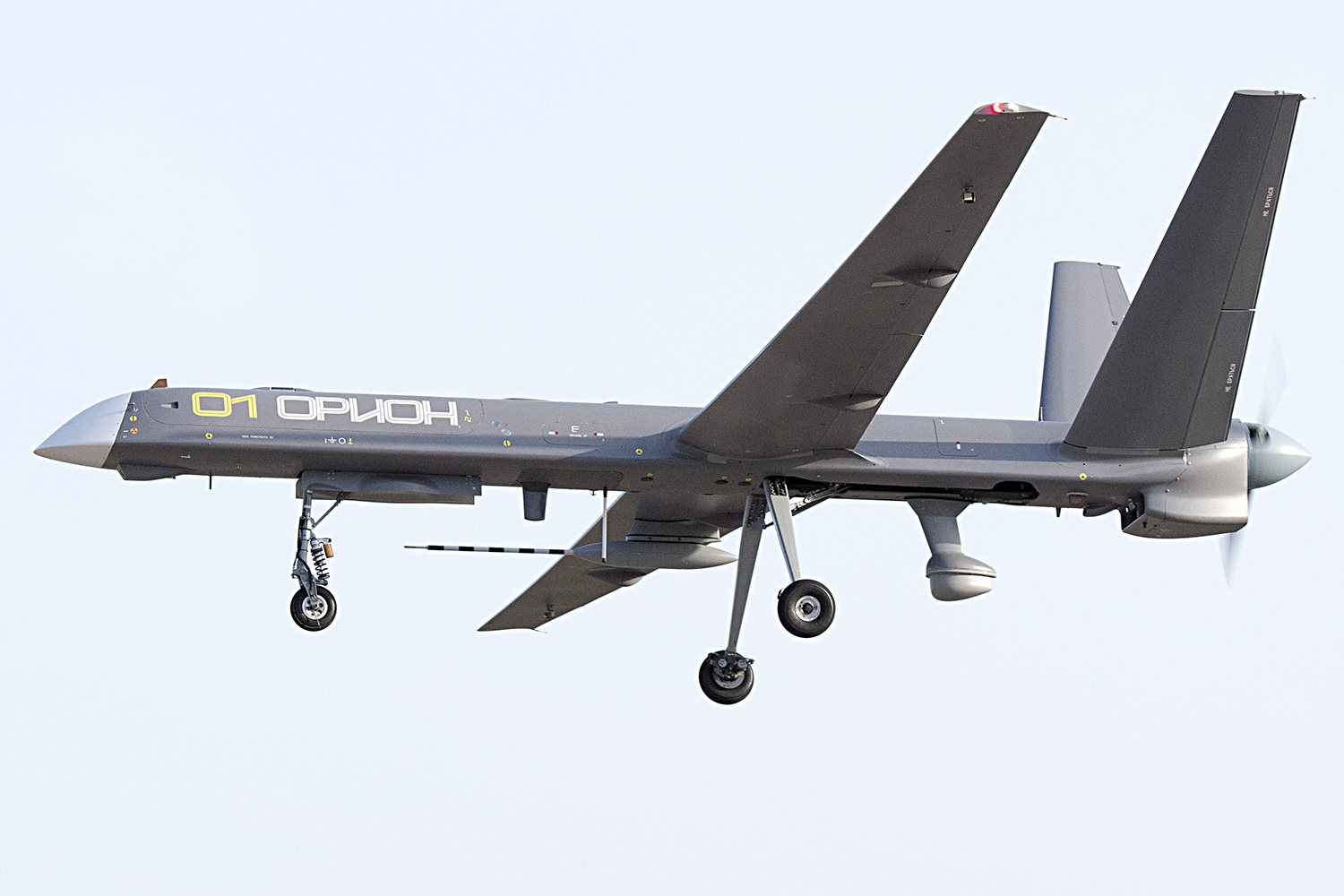
Russia’s new Orion-E attack drone, was used to destroy a military facility in Ukraine, marking its debut in the active conflict zone.
Video footage released by the Russian defense ministry on March 4 shows the drone, also known as Inokhodets, destroying a Ukrainian Army’s Aidar command post in Donetsk People’s Republic (DOR). The Orion-E is seen firing a guided missile at a ground object.
Drone War in Ukraine Hots Up: Russia’s Orion versus Turkey’s Bayraktar TB2
Military observers claim the Orion conducted at least 38 sorties in Syria, 19 air strikes and 18 reconnaissance flights.
In December 2021, the Russian MoD demonstrated its “fighter-like” capabilities, trials of which were conducted at the Crimean training ground. An MoD footage showed a pilot in the ground control station using the drone’s sensors to first identify the target before initiating a missile attack. It is seen launching an air-launched version of the 9M113 Kornet anti-tank guided missile (ATGM) against the helicopter drone in the video.
A description accompanying the video states, “For the first time, the military department declares that Russian drones have fighter capabilities and can destroy enemy drones.”
Bayraktars at work in Ukraine
In recent days, several videos have circulated on Ukrainian and Turkish social media showing Bayraktar TB2 drones taking on Russian tanks and armored vehicles.
“Bayraktars at work,” reads a caption accompanying a video posted by the Ukrainian military on Facebook showing at least one strike from the UAV tearing apart a column of Russian tanks and armored vehicles.
Another video from Malyn town about 150km from Ukraine’s capital, Kyiv, and shows the destruction of a Russian Buk surface-to-air missile launcher.
In yet another footage from southern Ukraine’s Chornobaivka town nearly 30 Russian vehicles—including two trains carrying fuel to Russian forces— were reportedly destroyed by the relatively inexpensive Turkish drone.
Ukraine shared grainy aerial images of Russian tanks and missile batteries destroyed by their Bayraktar drones. A black-and-white footage that went viral on Twitter Sunday showed a massive explosion ripping through what appears to be a Russian convoy.The video reveals Bayraktar’s key selling points: that they are capable of inflicting disproportionate damage on enemy hardware, far more cheaply than drones from the U.S. or Israel.
Ever since the war started on February 24, Russia claims it shot down several of these Turkish-made drones. An everyday update of Ukrainian equipment destroyed, issued by the Russian MoD, usually mentions at least one of these.
In December 2021, Russian Deputy Prime Minister Yury Borisov told during an interview with RBC the home-grown drones were better than Bayraktars. “Russian-developed drones don’t just have the same technical capabilities as the unmanned aerial vehicles that you mentioned but outperform them,” he said, when asked if Russian drones were capable of competing with the Bayraktar drones.
Capabilities of Orion and Bayraktar TB2
Developed by Kronshtadt, the Orion drone’s export variant is called “Orion-E,” while the version for the Russian Army is called “Inokhodets.” It is a middle-altitude long-flight drone that can carry up to four air-to-ground missiles. Its cruising speed is up to 200 km/h and maximum flight altitude is 7.5 km. The drone can stay in the air for up to 24 hours. Its maximum payload weight is 250 kg, and its arsenal includes the KAB-20 and KAB-50 adjustable aerial bombs, the UPAB-50 guided gliding aerial bomb, and the X-50 guided missile.
The Orion UCAV features a turret under the nose with electro-optical and infrared cameras and also possesses a laser target designator to deliver guided weapons. The drone is likely to be equipped with electronic warfare (EW) systems in the near future.
The advanced UCAV can also be fitted with additional cameras or a surveillance radar, however, there is no evidence so far that the radar was fitted on the drone during deployments of Syria.
Meanwhile, the laser-guided, bomb-carrying Bayraktar TB2 drones that have served as an ace up the sleeve of Ukrainian soldiers are manufactured by Turkish company Baykar. These can reach altitudes of 25,000 feet and fly for 27 hours, operated remotely from up to 300 km away. Each one can carry up to four laser-guided bombs or rockets, for an estimated total payload of 150 kg.
Bayraktar drones owned by Ukraine opened fire for the first time in October to destroy mobile artillery in Donbas, a region where Russian-backed separatists have faced off against Ukrainian troops since 2014 and that’s cited by Russian leader Vladimir Putin as one justification for his invasion.
In a December 2021 phone call with Turkey’s President Recep Tayyip Erdogan, Putin condemned Ukraine’s “provocative” deployment of the attack drones.
